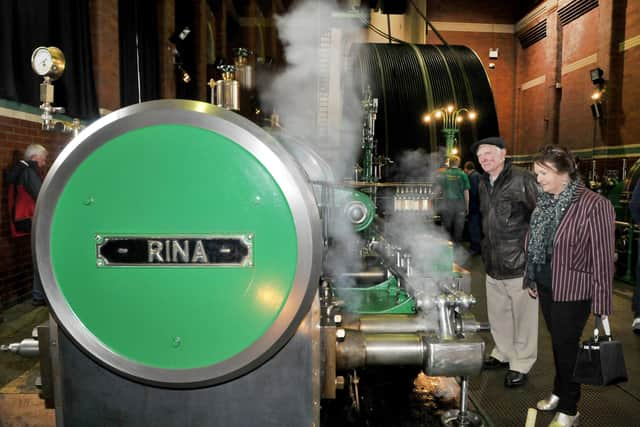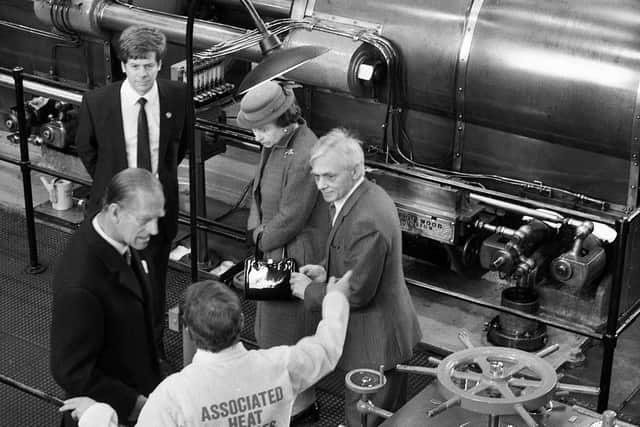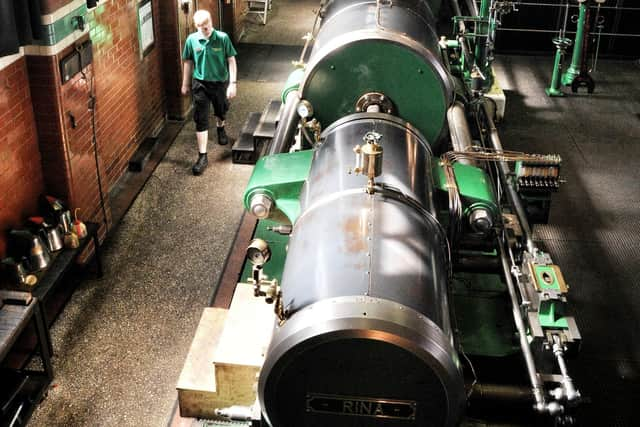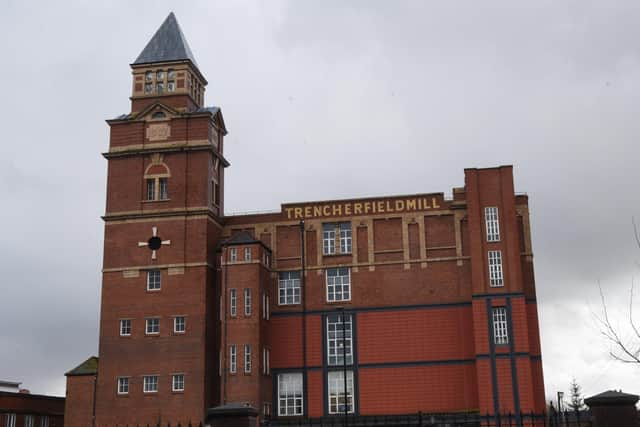Future of Wigan's historic Trencherfield Mill steam engine up for discussion after being closed for four years
and live on Freeview channel 276
Trencherfield Mill’s steam engine was built in 1907 and was thought to be one of the largest of its kind in the UK, operating until cotton production ended there in 1968.
Queen Elizabeth II and the Duke of Edinburgh visited the engine in 1986 and it was fully restored to its former glory around 30 years later, when it was turned into a visitor attraction.


Advertisement
Hide AdAdvertisement
Hide AdBut it has been closed to the public for the past four years – despite Wigan Council bosses insisting it would remain open when mill manager Bill Rowley was made redundant at the beginning of 2019.
Volunteers, councillors and council staff have met several times over the past few years to discuss the future of the engine, but so far, it has remained silent.
Volunteer Dennis Holland said: “It’s a bit of Wigan history. It was the largest working steam engine in the UK I believe still running on steam and in its original building. It’s got quite a few USPs. A lot of steam engines from mills have been moved to the likes of Bolton Steam Museum and aren’t operating in their original mills, but this is.
"It’s still got the rope race there too. Many steam engines won’t have it because it takes up so much space. Potentially it could extract water from the canal.”


Advertisement
Hide AdAdvertisement
Hide AdMr Holland is keen to see the steam engine working again and recently wrote to the council to inquire about its future, after his disappointment that it was not included in the popular Light Night Festival.
He wrote: “Each year there have been plans to run the engine in conjunction with other events. Up to quite recently the council website stated that the engine would run in 2022, this has now moved to 2023.
“My challenge to the council is to stop procrastinating. Put some meat on the proposals to run in 2023 by committing to run during the National Heritage Days – September 9 to 18, 2023 – at the very latest. These dates are out of the control of the council or other influences.
"This will put the engine running in steam on the local and national agenda. If Spinners Mill engine and Astley Colliery engine were to be run in the same period to promote local industrial heritage, so much the better.”


Advertisement
Hide AdAdvertisement
Hide AdMr Holland received a reply from Lesley O’Halloran, the council’s director of customer and culture, who explained the authority had hoped to operate the engine as part of the Light Night Festival, but had not been able to do so due to a problem with the glass canopy over the rope race.
She wrote: “The glass panes are cracked and it has the potential to collapse at any time, therefore we could not have staff or members of the public in the engine room.
"Due to the repairs needed we had to cancel the plans to operate the engine as part of the event, which was disappointing, as I agree that it would have been a great spectacle to have the engine running as part of it and the artists were understandably keen to feature it.”
Ms O’Halloran explained that specialist engineers had been carrying out maintenance work on the steam engine while it has been closed to the public.


Advertisement
Hide AdAdvertisement
Hide AdShe also revealed that talks are taking place regarding a voluntary group taking over the running of the engine in a community asset transfer (CAT).
She said: “A business case is currently being developed by this organisation and the relevant process is being followed in assessing the viability of the plan, with colleagues in corporate property management. Once a final decision is made, we will be able to plan the future operation of the engine for events such as Heritage Days and Light Night.
"Unfortunately, as you say, the pandemic did effectively result in us having to put any plans on hold for approximately two years and conversations around a potential CAT have now been ongoing since late summer. However these discussions have been encouraging and we’re hopeful for a positive outcome.”
Leading the bid for the asset transfer is Cameron Stephenson, who restores and repairs vintage vehicles through his firm CJS Engineering and founded Trencherfield Mill Steam Engine Preservation Trust.
Advertisement
Hide AdAdvertisement
Hide AdHe said: “I started the trust in January 2022 to look to preserve the steam engine for future generations and to build a new multi-functional museum space showcasing Wigan's history.
"I have been working with the council to develop these plans as to which they are looking to start the process of the community asset transfer as to which the site would be transferred to the trust. This would be a huge milestone achievement in allowing the trust to develop and start building a museum to be proud of.
"This will be supported by sponsors and private individuals to start us off on this journey. The residents of the mill are very supportive of the idea as they see the engine as their own and can't abide by it being dormant.
"This can only develop into a positive news story for people to follow over this hard period where living costs are rising. The aim is also to give back to the community, offering this a safe, warm space for people to come and meet up at the in-house cafe with opportunities for volunteering, education and social interaction which is much missed by all generations.”
